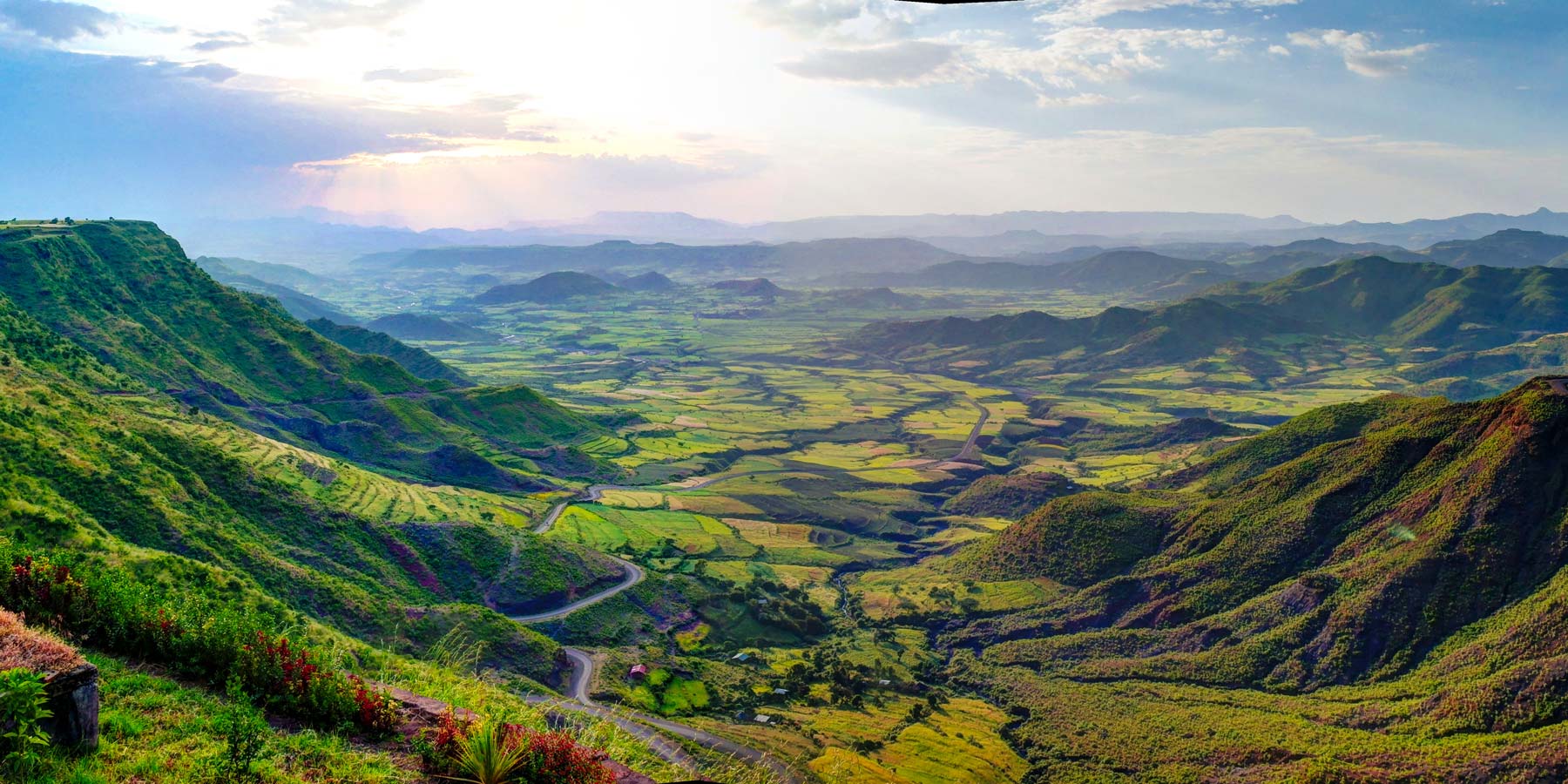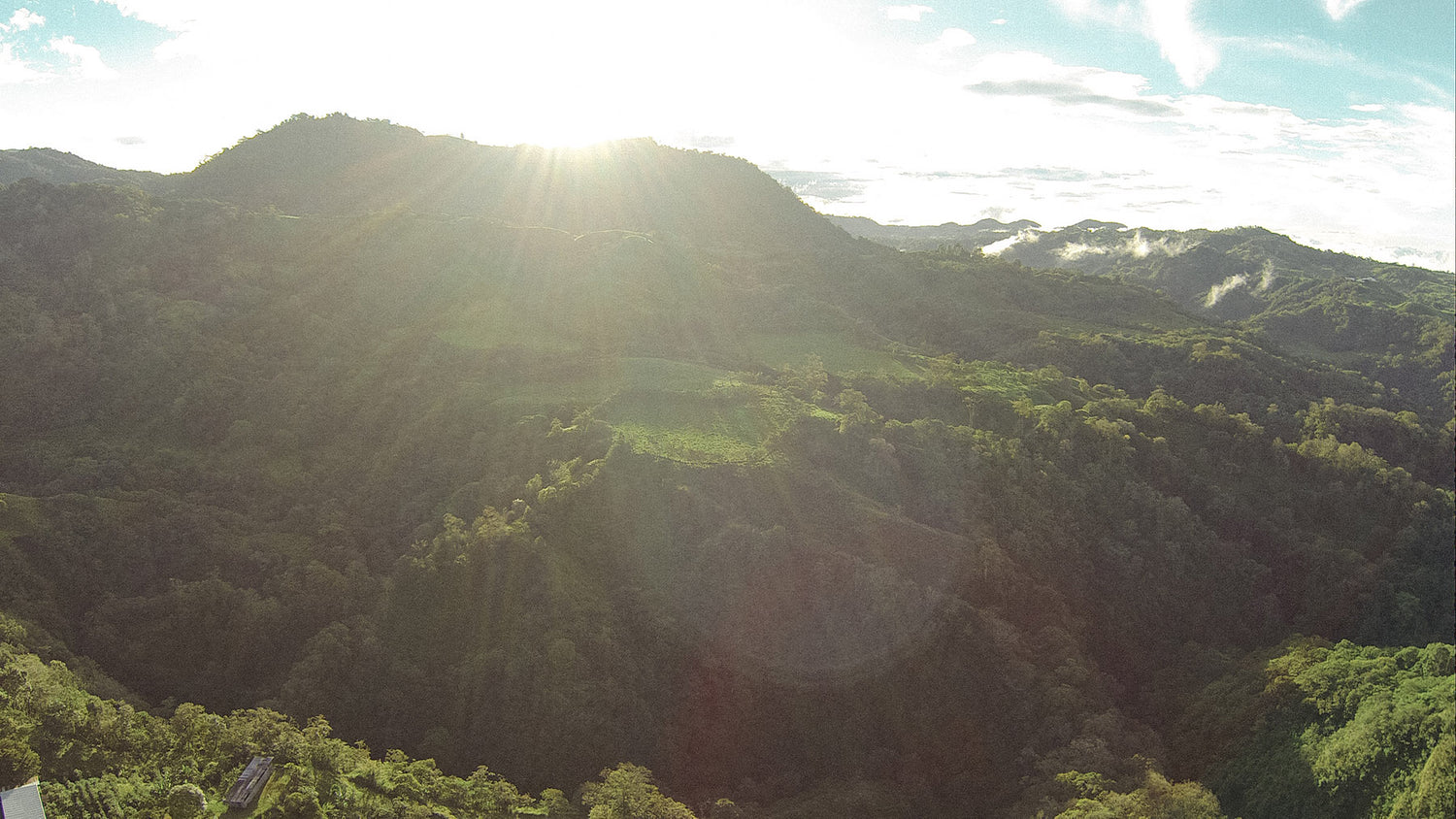Nowadays, we cannot imagine our everyday lives without coffee. This invigorating, delicious drink is simply part of our lives. But where does coffee come from? In this article, we want to take a journey back in time to the origins of coffee and also look at the original taste of coffee.
This has of course changed over the centuries. So... pour yourself a cup of coffee, ideally our Ethiopia Guji (you'll find out why in a moment), sit back and immerse yourself in a piece of coffee history. Elias Fischbacher from the Wildkaffee Rösterei wishes you lots of fun and a good journey to the original taste of coffee.
Original taste of coffee - where was coffee discovered!
The coffee plant and the original taste of coffee originally come from Ethiopia . That is precisely why we started with our Ethiopia Guji coffee above. The legend of the shepherd Kaldi says that his goats ate the red coffee cherries and then started jumping around happily. This happened in the 9th century . The invigorating effect on his herd of goats fascinated him so much that he tried the fruit of the coffee plant himself. The original taste of coffee, or rather that of the coffee cherries, was sweet and refreshing. Kaldi quickly noticed the stimulating and invigorating effect and told the local monks about it.

Original taste coffee – back to the roots!
However, the fruit was too bitter for the monks, so they threw the cherries into the fire . A delicious smell then spread, which sparked a whole new interest in the fruit . They took the roasted seeds of the coffee cherry out of the fire and examined them in detail. The coffee bean we know today was born! So they decided to make an infusion from the roasted beans . The monks found this infusion to be delicious, and the stimulating effect of the caffeine helped them to be alert during prayers. Little did they know what impact their discovery would have to this day.
As you all know, this coincidence has continued to this day because they discovered not only the cherries but also the further processing that is common today: roasting! The monks viewed roasted coffee as a gift from God. But the original taste of coffee could definitely not be compared to that of today... the roasting in the fire and the preparation were too uneven and immature. Ultimately, the beans were "roasted" together with the cherries and the infusion was made from the whole fruit. Even today, there are still tea infusions made from coffee cherries. This type of tea is known as cascara . The taste of cascara is reminiscent of a fruit tea. However, only the fruit is used, without the bean.

Original taste of coffee - distribution in the world
Coffee, as well as the first coffee drink, was only found in Ethiopia for a long time. Around 300 years later, coffee crossed the borders for the first time and was exported to Arabia through the slave trade. Over time, coffee developed into the "wine of Islam" . The original taste of coffee particularly delighted the Persians, because they and all other devout Muslims were strictly forbidden from drinking wine. The invigorating effect of coffee and the original taste of coffee were therefore a good alternative. This is where the first name for coffee came from.
It was called "Qahwa" , which means "the exciting". From there, it spread further and further, and in the 15th century, coffee crossed the borders of Arabia for the first time. Yemen in particular benefited from this, becoming the world's most important coffee trader. From Yemen, it went via Mecca to Medina and from there to the Egyptian capital Cairo.
The expansion of the Ottoman Empire was responsible for coffee conquering Asia, Syria and parts of Europe , especially the south-east. The Arabs did not want to share their secrets about coffee and the original taste of coffee with the world and always poured hot water over the green coffee when exporting it so that it was no longer able to germinate. They also vehemently carried out this process. This is how the first coffee houses were established in the Syrian metropolises of Aleppo and Damascus. There the general population was first offered the original taste of coffee.
The original taste of coffee & the beans reach Europe!
However, during the course of colonization in the 17th century, the whole secret surrounding coffee changed. The Arabs' monopoly on the original taste of coffee and its cultivation fell, so that travelers and pilgrims repeatedly brought small amounts of the beans back to their home countries on their journeys and told of the invigorating effects . Venetian merchants then brought coffee to Central Europe in the 17th century, where the original taste of coffee and its effects were very well received. The first European coffee houses sprang up rapidly. The trading metropolises of London, Paris and Vienna in particular played a key role in the origins of coffee house culture in Europe. The first coffee houses also opened in Germany at the end of the 17th century. Since coffee was still a luxury item at the time, it was primarily drunk by the wealthy upper class. They met in the coffee houses, exchanged ideas on current topics and enjoyed the original taste of coffee. Some coffee houses still exist today, such as the Regensburg Coffee House .
With the start of industrialisation in the 19th century, coffee became the popular drink in Germany. The upper classes continued to enjoy the original taste of coffee, while the working class swore by the effects of caffeine in order to stay awake and lively during the usual 16-hour days. A common recipe at the time was coffee soup, made from bread, milk, butter and coffee . The soup filled the workers up and the coffee provided the energy boost they needed. Industrialisation also ensured that the global coffee trade experienced a whole new boom. The use of machines simplified production and the transport of the beans. Soon, coffee was being delivered in sacks to the most important ports and coffee went from being a luxury item to a mass product. The original taste of coffee also developed to today's standards.
How the original taste of coffee has changed until today
Nowadays, it is not just the production and roasting of coffee that has changed. The original taste of coffee has also changed significantly due to new cultivation methods and techniques . Over the centuries, new varieties have been discovered and developed. Of course, a lot has also changed in terms of processing. In the third wave of coffee, which continues to this day, the original taste of coffee has changed significantly. Nowadays, people like to play with the fermentation of the beans when processing. This creates fruity, exotic notes that make for a completely new, flavorful coffee. You can find more information about the new trends here .
Another huge aspect is roasting. While the original taste of coffee was characterized by uneven roasting directly in the fire and later in special roasting pans, today modern drum roasters dominate the taste of coffee. The modern roasters ensure even, gentle roasting and thus tease out the familiar taste from the selected beans.

The origin & original taste of coffee summarized!
Coffee and the original taste Coffee originally comes from Ethiopia. A goatherd named Kaldi discovered the cherry. The original taste of coffee and the first "roasting" were then discovered by Ethiopian monks . After several centuries, coffee spread to the Arab states and from there to the wider world. Over the years, coffee continued to develop and played an increasingly important role all over the world. Industrialization meant that coffee could be mass-produced and shipped. This is how coffee became established among the general population and became a popular drink in many places. Today, the original taste of coffee has changed due to new processing methods and more modern roasting machines . #staywild


